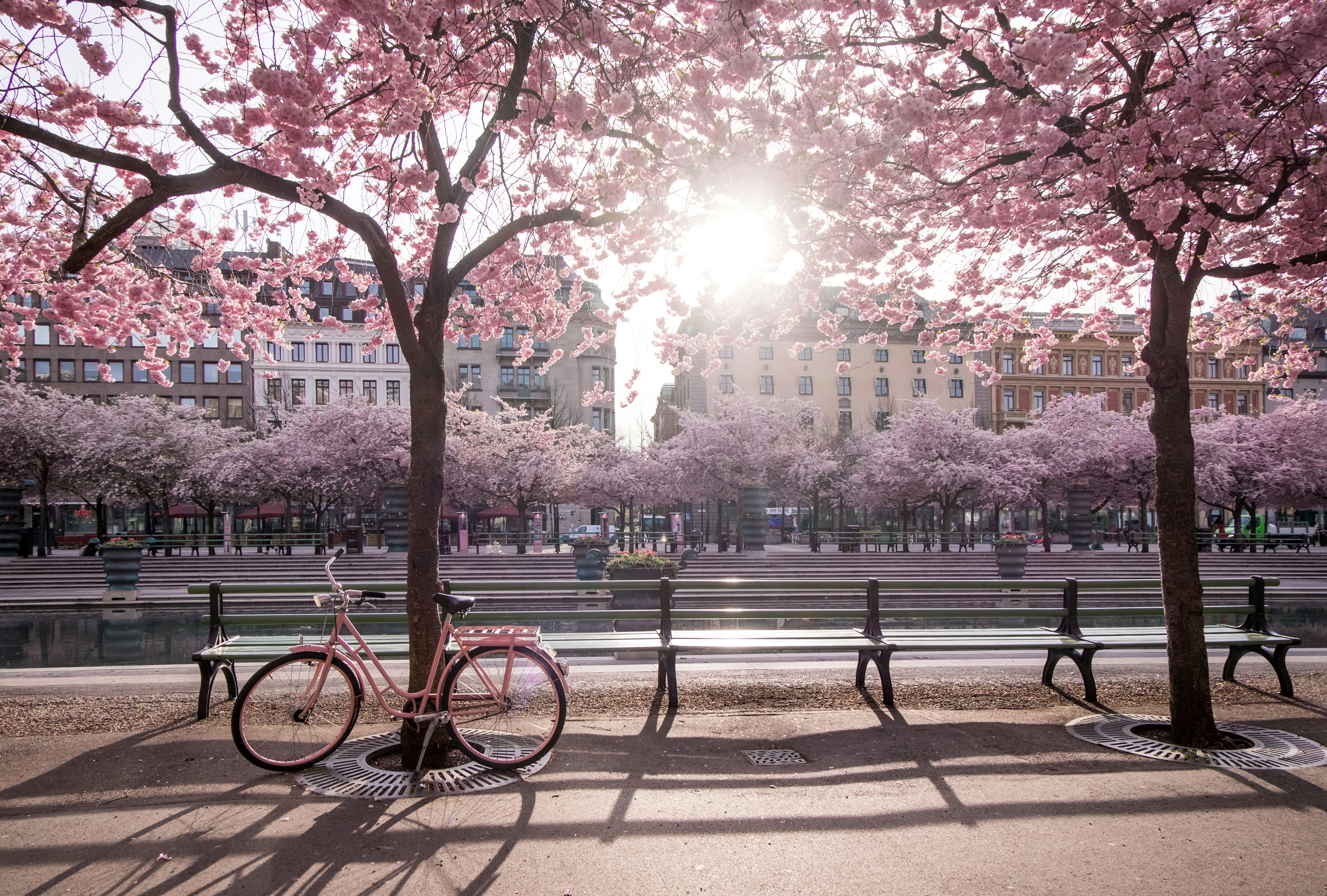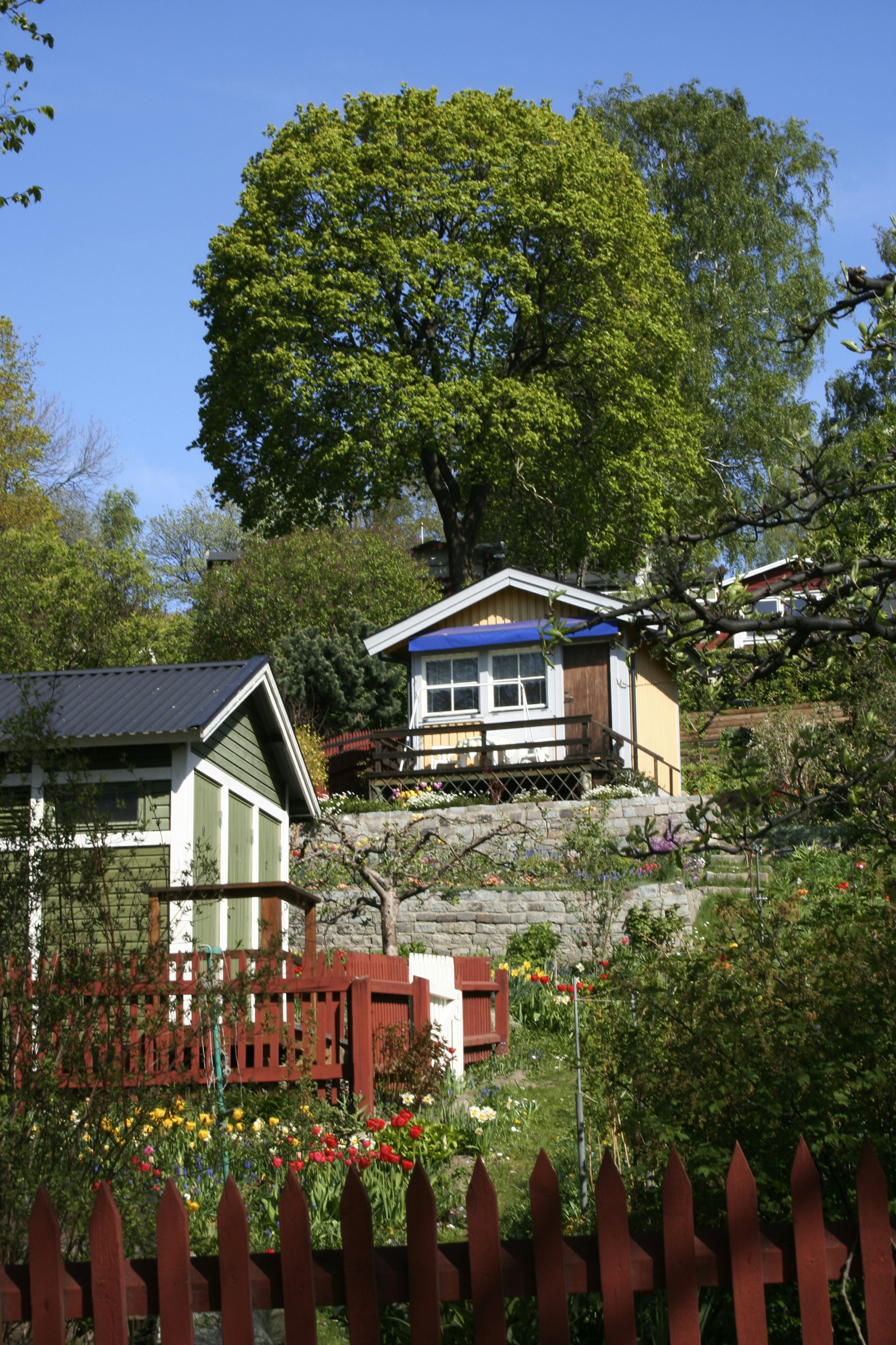
The 30 best countries, cities and regions to visit in 2025

Sep 21, 2021 • 8 min read

View of Monument Engelbrekt and the beautiful gardens of Stadshusparken,
A love of nature is deeply ingrained in the Swedish national character, so it’s unsurprising that the country’s capital ranks near the top among world cities in terms of green space. Covering 40 percent of Stockholm’s area, the city’s public parks and gardens are diverse, ranging from tiny squares to Nationalstadsparken, the world’s first National City Park, established in 1995 and made up of several contiguous natural areas that together cover 27 square kilometers (nearly 10½ square miles).
Any list of top parks in Stockholm is sure to be incomplete, but here are some highlights including both well-known classics and slightly off-the-beaten-path parks worth visiting for scenic views, recreation or specific attractions.

Part of Nationalstadsparken, Djurgården is Stockholm’s green lung. A former royal hunting park, this large island east of the city center is home to many museums as well as abundant fields, meadows and woodlands, including one of Sweden’s most northerly beech forests. Near the island’s eastern tip is Isbladsviken, once an inlet of the Baltic Sea but now a lake that attracts plentiful birdlife including swans, ducks, geese, herons and lapwings.
Djurgården’s many trails are easily explored on foot or on two wheels. Bicycles and maps are available at the Djurgården Visitor Center next to the Djurgården Bridge.

On a small peninsula on the south side of Djurgården lies Waldemarsudde, the former home of Prince Eugen, the youngest brother of Gustaf V. A noted landscape painter and art collector, the prince left his property to the Swedish state when he passed away in 1947. His house is now an art museum.
The surrounding park has terraces, gardens and walking paths with fine views of Djurgården and the Baltic approach to Stockholm. Scattered throughout the grounds are sculptures purchased by Prince Eugen. Also on the property is an 18th-century Dutch-style windmill that was a favorite motif in the prince’s paintings. A café in the park serves lunch and snacks in summer.

This small park at the heart of Stockholm began life as a royal kitchen garden in the 1400s and has evolved into one of the city’s most beloved gathering spots, with a rectangular pool, fountains, a giant chessboard, many cafés and restaurants, and a more formal garden section surrounding a statue of the warrior king Karl XII.
During the warmer months, Kungsträdgården comes alive with festivals and other events. In spring the Japanese cherry trees lining the pedestrian avenues on either side burst into glorious pink bloom. In winter there’s ice skating around the towering statue of another Karl (XIII) in the center of the park.

Just off busy Stureplan, Humlegården is an oasis within the Östermalm shopping and nightclub district. In 1619 Gustav II Adolf created a royal kitchen garden here to grow fruit, herbs, and the hops (humle) that gave the park its name. His daughter, Queen Christina, converted Humlegården into a baroque garden with pedestrian avenues lined with linden trees. A later redesign added winding paths and trees from various parts of the world. Recreational facilities include a large playground and a youth center with a skateboard ramp, a playing field, a basketball court, and an outdoor gym.
Kungliga Biblioteket (the National Library of Sweden) dominates Humlegården’s southern end. In the center of the park, a statue of famed Swedish botanist Carl Linnaeus stands on a high plinth surrounded by four female figures representing botany, zoology, medicine and mineralogy.

Observatorielunden is located just off Stockholm’s busiest street, Sveavägen, but its hilltop location makes it feel much more removed, making it a nice spot for a picnic or just some relaxation. At the highest point stands the old Stockholm Observatory, built in the 18th century. It’s no longer in operation, but there are good views of Vasastan from the terrace, as well as a café famous for its waffles.
At the park’s northeastern edge lies Stadsbiblioteket, Stockholm’s iconic city library with a famous rotunda. To its south, Sigrid Fridman’s 1936 sculpture of a centaur stands on a precipice, seemingly ready to leap over the edge. Below, a reflecting pool surrounded by benches and willow trees dominates the park’s lower elevations along Sveavägen.

This inner-city park is a popular spot for year-round recreation. Here you’ll find grassy areas and walking paths shaded by large trees, as well as a minigolf course, a playground centered around an artificial rubber hill, basketball and pétanque courts, an outdoor gym and a dog park. In winter a playing field is converted into an ice skating rink.
Along the southern side of Vasaparken is a small garden designed to stimulate all five senses with seasonal plants including flowers, herbs, berry plants and bushes.

At the north end of Västerbron (the Western Bridge), which connects Kungsholmen and Södermalm, lies Rålambshovsparken, a grassy, tree-lined park with front-row views of Lake Mälaren. A popular venue for concerts, outdoor theater and other events, “Rålis” also has a variety of recreational facilities including jogging trails, a playground, a kiddie pool, an outdoor gym, a climbing wall, and pétanque and beach volleyball courts. Beneath Lilla Västerbron there are basketball hoops and a skatepark.
In summer Rålambshovsparken is a popular spot for picnics, sunbathing and dips in Lake Mälaren. In winter the park’s outdoor amphitheater is converted into an ice skating rink.

Once an infamous prison island, Långholmen is now full of people seeking escape from urban stress rather than from jail. Much of the island is parkland, with meandering walking paths, luxuriant vegetation and two popular swimming spots. The former prison is now a hostel and museum.
Långholmen’s eastern end provides stunning views across Lake Mälaren to Kungsholmen, Stadshuset and Gamla Stan. On the west side, there are pretty allotment gardens, as well as exposed cliffs and mixed parkland with more lake views. Along the south side, Pålsundet, the narrow channel separating Långholmen from Södermalm, is lined with long rows of small boats. There are kayaks for rent near Pålsundet's western end.
For panoramic views of Lake Mälaren, Gamla Stan, Stadshuset, Kungsholmen and Västerbron, head to Skinnarviksparken on Södermalm. The park’s western side has walking paths through landscaped areas with many trees, lawns and benches. The eastern section contains Stockholm’s highest natural point, a rocky outcrop known as Skinnarviksberget, which tops out at 53m (just under 174ft). Its unobstructed vistas make it a popular picnic spot and one of the best places in Stockholm to catch a summer sunset.
The name Skinnarviksparken comes from the skinnare (tanners) who lived and worked in this area starting in the 1600s. The unpleasant smells from the tanneries meant that they had to set up operations away from populated areas. Several 18th-century wooden houses remain along Gamla Lundagatan and Ludvigsbergsgatan by the park’s southeastern corner.

Tantolunden’s mixed elevations, abundant vegetation and diverse recreational opportunities make it a favorite park among Södermalm locals. In summer, swimmers and sun worshippers flock to its beach, which has jetties, a jumping tower and a beach volleyball court. Other facilities include a minigolf course, a playground, an outdoor gym and a dog park. In winter, there’s good sledding on the park’s slopes.
One of the most delightful things to do in Tantolunden is to take a walk among the many allotment gardens with lush flower beds, vegetable patches and quaint little cottages.

During the 18th and 19th centuries the now-trendy Södermalm district was one of the poorest parts of Stockholm. Vitabergsparken was created in the late 1800s to give local factory workers access to a bit of nature. With varied terrain, broad lawns and plenty of trees it’s a popular spot for picnics and other activities. In addition to walking paths, there’s a dog park, a playground and a kiddie pool, as well as allotment gardens and a summer café. In winter, the park’s hills draw sledding enthusiasts.
Several well-preserved 19th-century wooden houses remain in the streets around Sofia Church, which crowns the park’s highest point in its northwest corner.
Named for the author Ivar Lo-Johansson (1901-1990), who lived across the street, this tiny park on the heights of Södermalm, west of Slussen, is a popular spot for adults and children alike. The charming playground has a rural theme, with wooden farm animals and playhouses designed to look like farm buildings. The grassy slope below is a popular picnic spot thanks to its panoramic view of Gamla Stan, Stadshuset and Lake Mälaren.

Located on the western shore of Brunnsviken, just north of the city center, Hagaparken is a classic English landscape garden with lawns, woodlands and semi-open landscapes dotted with architectural features such as the Echo Temple, a Chinese pavilion and a Turkish kiosk. Gustav III commissioned the park and most of its structures, though some of his plans remained unfinished following his assassination in 1792.
Near the main park entrance stand Koppartälten (the Copper Tents), connected buildings with blue-and-gold facades designed to look like Roman campaign tents. Erected as housing for Gustav’s lifeguards, they now house a café and a free museum about Hagaparken. Behind Koppartälten there's a butterfly house with more than 700 tropical butterflies, as well as a 30-meter (over 98ft) aquarium tank with sharks and colorful fish.
Trees, bushes, flowers and herbs from all over the world thrive in this botanical garden, which occupies a beautiful waterfront setting on the eastern shore of Brunnsviken. Exhibits include lush flowerbeds, vegetable and herb gardens, a fruit orchard and wetlands. Three rockeries represent mountains in Scandinavia, North America and Asia, with flora specific to each region. A rhododendron valley with more than 70 species blooms in late spring.
There are also two conservatories with plants from warmer climates, including the world’s largest species of water lily. There is a small admission fee to the conservatories but the park is free to access.
You may also like:
The very best day trips from Stockholm
Is now the best time to visit Stockholm
Best places to swim in Stockholm